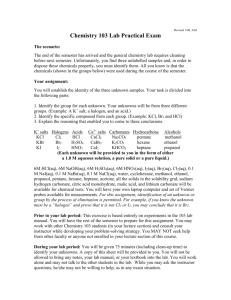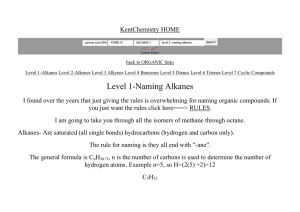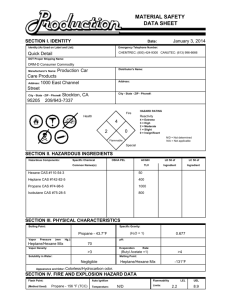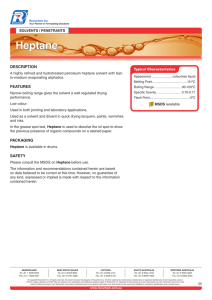GLC B AC1
advertisement
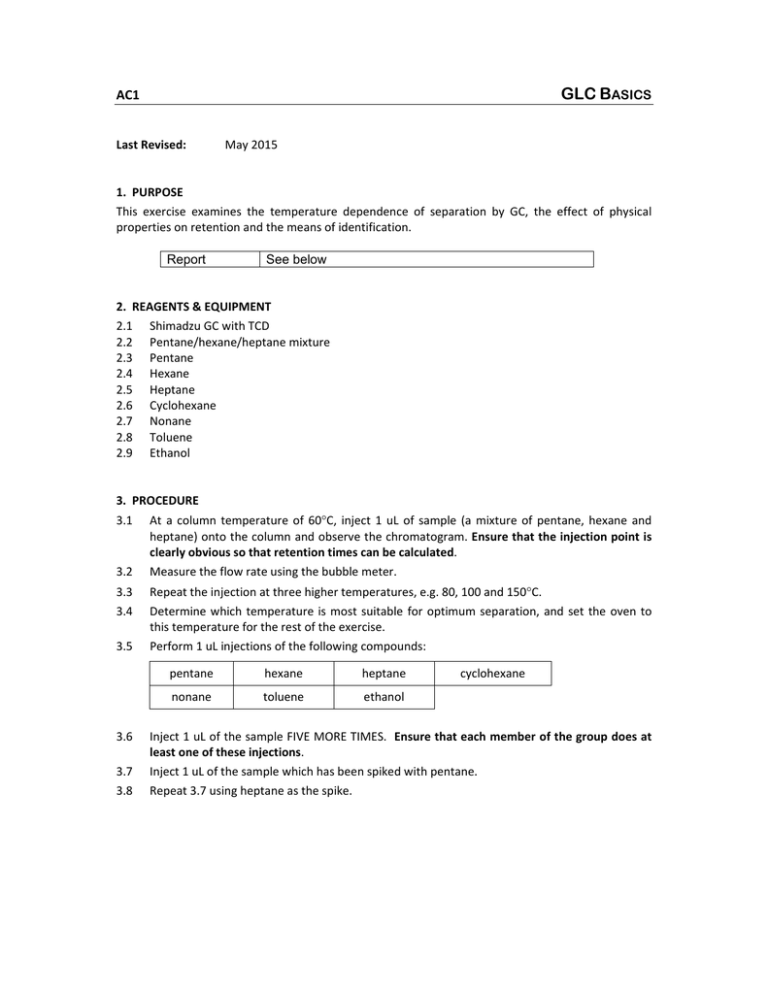
GLC BASICS AC1 Last Revised: May 2015 1. PURPOSE This exercise examines the temperature dependence of separation by GC, the effect of physical properties on retention and the means of identification. Report See below 2. REAGENTS & EQUIPMENT 2.1 Shimadzu GC with TCD 2.2 Pentane/hexane/heptane mixture 2.3 Pentane 2.4 Hexane 2.5 Heptane 2.6 Cyclohexane 2.7 Nonane 2.8 Toluene 2.9 Ethanol 3. PROCEDURE 3.1 3.2 3.3 3.4 3.5 3.6 3.7 3.8 At a column temperature of 60C, inject 1 uL of sample (a mixture of pentane, hexane and heptane) onto the column and observe the chromatogram. Ensure that the injection point is clearly obvious so that retention times can be calculated. Measure the flow rate using the bubble meter. Repeat the injection at three higher temperatures, e.g. 80, 100 and 150C. Determine which temperature is most suitable for optimum separation, and set the oven to this temperature for the rest of the exercise. Perform 1 uL injections of the following compounds: pentane hexane heptane cyclohexane nonane toluene ethanol Inject 1 uL of the sample FIVE MORE TIMES. Ensure that each member of the group does at least one of these injections. Inject 1 uL of the sample which has been spiked with pentane. Repeat 3.7 using heptane as the spike. REPORT Calculations 1. Measure the retention distance (in mm) or time (in seconds) for all peaks in steps 3.1, 3.3 & 3.5. 2. If necessary, convert all retention distances to retention times (RT), using the chart speed (in mm/s) (time = distance ÷ speed). 3. Calculate the average RT for each compound at each temperature. Tabulate these results. 4. Plot a single graph of average RT versus temperature for each of the three components of the sample. 5. For the replicate injections of the sample in step 3.6, measure/calculate the following: a. the peak heights for pentane and heptane b. the relative precision (RP) in the peak heights for pentane only 6. Calculate the number of theoretical plates for this column, using each occurrence of the heptane peak. 7. Calculate the resolution value (R) of the hexane and heptane peaks for each of the four temperatures. Discussion describe and explain the changes in the chromatogram caused by increased temperature explain the order of elution of the seven compounds describe what would happen if the injection volume was increased to 50 uL discuss the two methods of identifying peaks (i.e. comparison of retention time and spiking) comment on the differences in peak heights for the five sample injections in step 3.6 comment on the value for N (number of theoretical plates) comment on the resolution values calculated for the four different temperature runs AC1 p2
